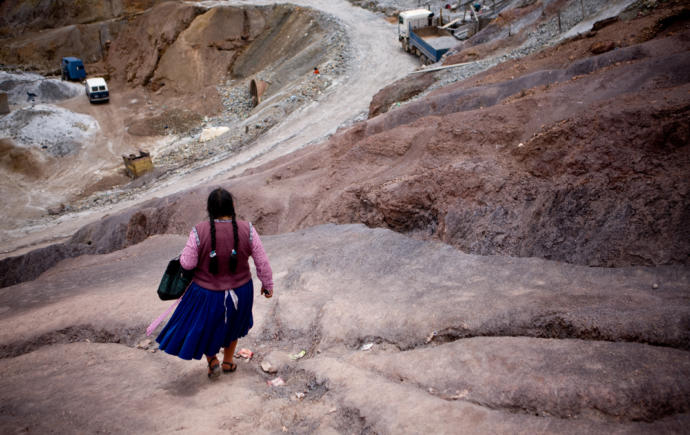








The magazine of the photo-essay

Jan 2017 back issue


by Ronald Patrick
“A free, really high quality photo-essay magazine. Fabulous!”
Stephen Fry. British actor, writer and film & documentary maker


Child miners are a sad and tragic reality in Potosi. Due to the unbearable economic situation, a lack of opportunities
for many families and by simply being the sons of a miner, children renounce to their childhood and have to quickly
learn the job that is said to have killed 8 million people since the opening of the mine some 500 years ago. Some start
work at the age of 10, some earlier.
Every day around 4500 miners (adults and children) enter Cerro Rico to extract what’s left of Silver, Zinc and Tin in a
place with one of the worst working conditions on earth, hoping to find a vein that will change their lives and the lives
of their families.
The life expectancy of a Potosi miner is 35-40 years old; amongst the reasons that explain it are: an absolute lack of
basic safety conditions, fine dust in the tunnels (which causes Silicosis), toxic gases, a high presence of asbestos,
rock collapses and the consumption of 96% alcohol at break time.
The children that go into the mine are treated the same way as any other worker and will rapidly learn the same
traditions and habits as their workmates, inevitably stepping into manhood faster than they ever expected.
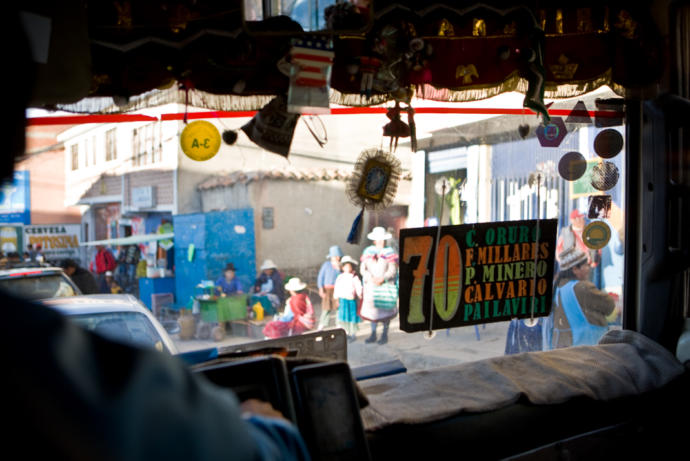
The bus’s sign reads Pailaviri, the last stop on it’s route, at Cerro Rico. Potosí, Bolivia.
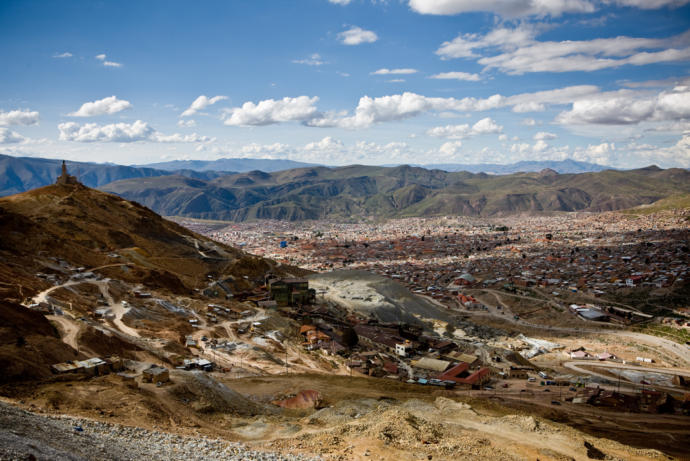
View of the city of Potosí from Cerro Rico. Potosí, Bolivia.
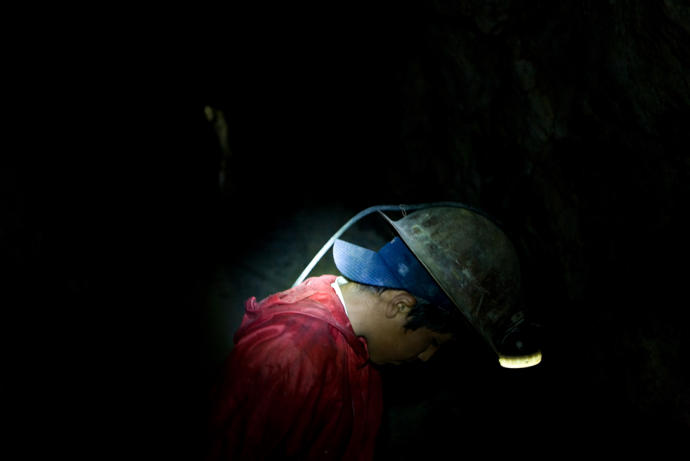
Marvin (14) has worked in the mine since he was 11. He earns 42 dollars a week working in his father’s “paraje”
(section of one of the mines). He is already a year behind in school and desperate to back to school and get out of the
mine.
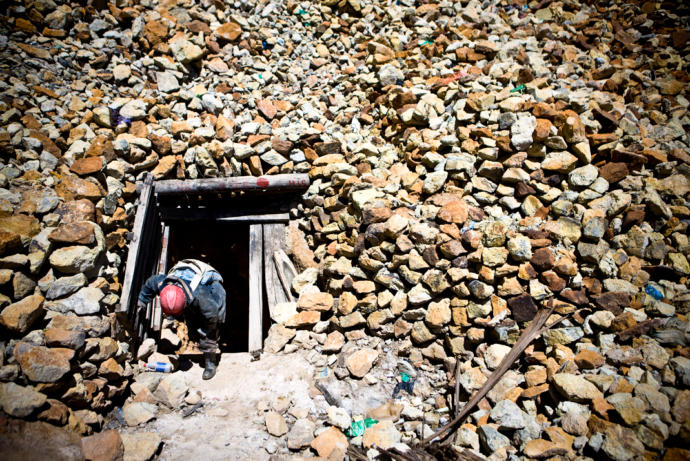
A young miner coming out of his 8-hour shift, carrying 40kgs of mineral on his back. His working area is some 100m
below from this point where the temperature rises to 38ºC and the oxygen levels drop drastically.
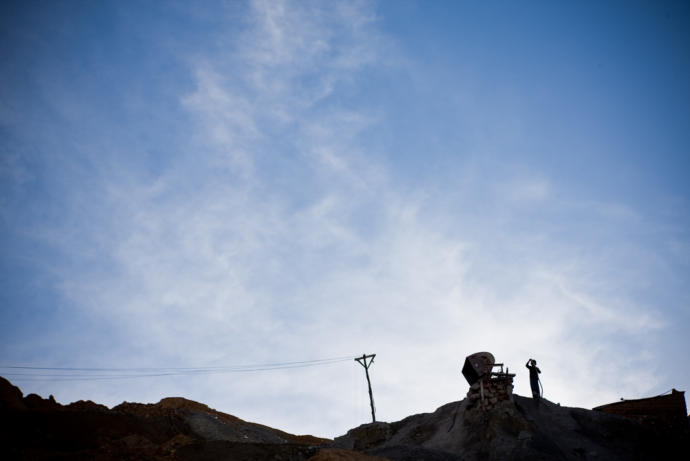
A boy outside his home and working place at the silver mine of Cerro Rico, Potosi, Bolivia.
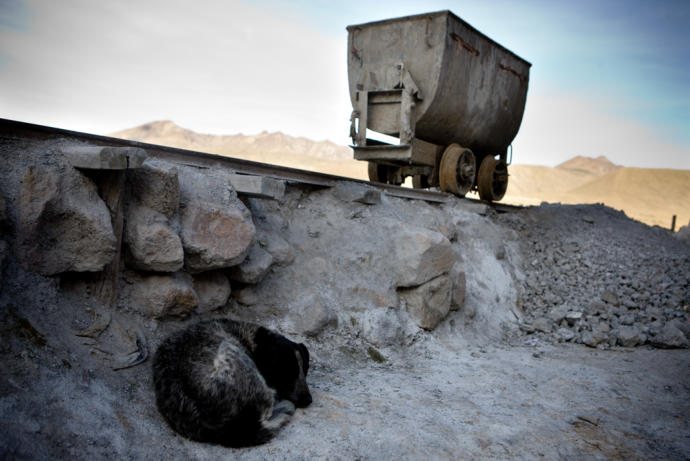
Dogs are important in the mines. They are fierce guards of the “bocaminas” (entrances to mines) and houses in Cerro
Rico, thus they represent a constant danger to people and specially children who live in the area. There are thousands
of dogs in the mine area and in Potosi itself. Potosí, Bolivia.
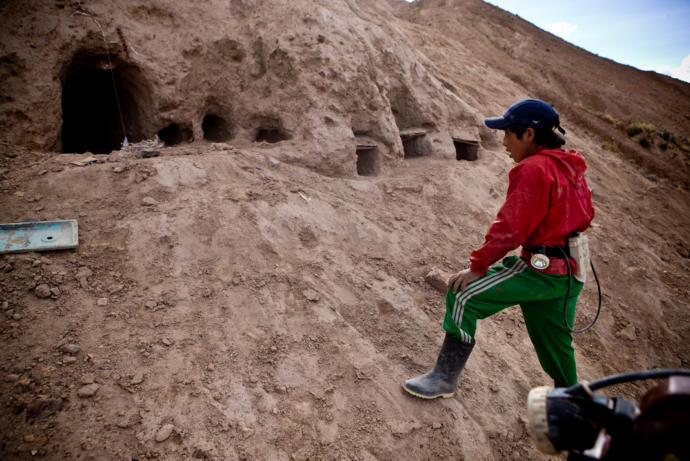
Marvin (14) looks at the ‘playground mines’. These are small tunnels made for 5+ year old kids for them to play and
get used to darkness, lack of air and crawling inside the mine. Children are especially useful to reach small cavities
that adults couldn’t get into.
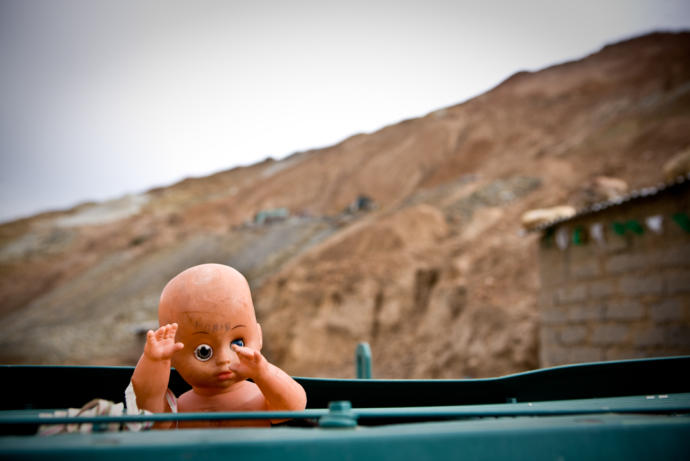
A doll next to a “bocamina” (an entrance to a mine). It reads “to die” on its forehead.
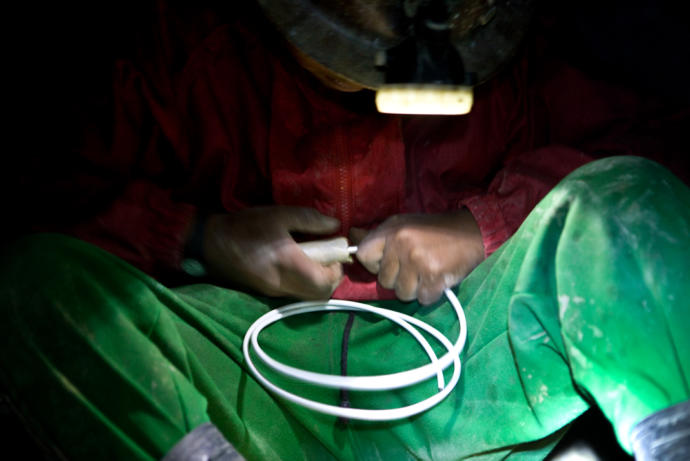
Marvin (14), preparing explosives for the mine. His father taught him to prepare it when he was 7. Dynamite,
gunpowder and everything necessary to fabricate explosives is sold legally and freely on the streets of Potosi.
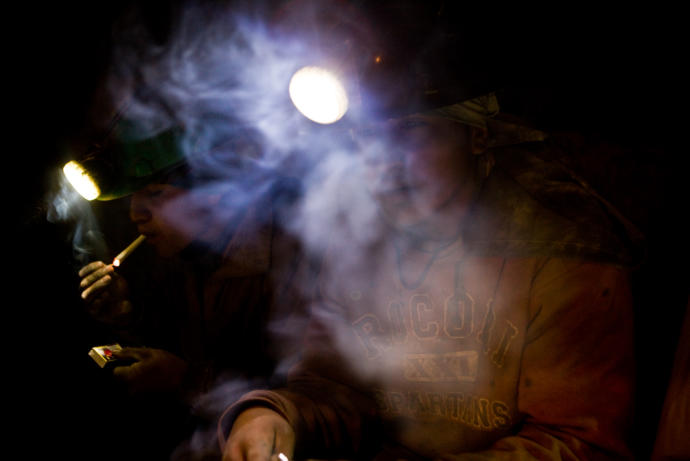
Two young miners take a break inside the mine. Some of the customs inside the mine include: smoking, chewing coca
leaves (“pijchar”) and drinking cups of 96% alcohol. Youngsters learn these traditions really quickly.
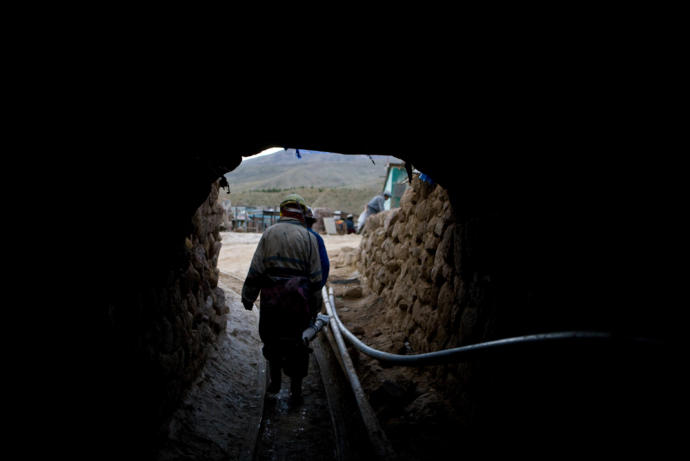
A 16 year old miner leaving the mine carrying a pneumatic perforator after his 8 hour shift.
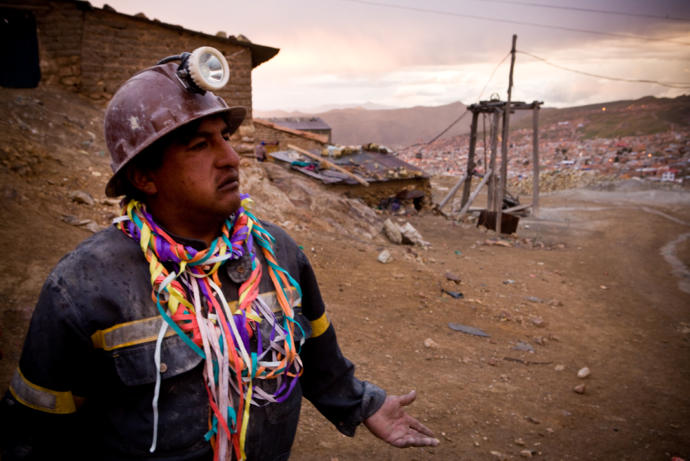
Boby has been a miner since he was 10. He’s desperately trying to get his sons an education to prevent them from
having to work in the mine. Unfortunately there is no escape for some of his children who have already started working
in the mine.
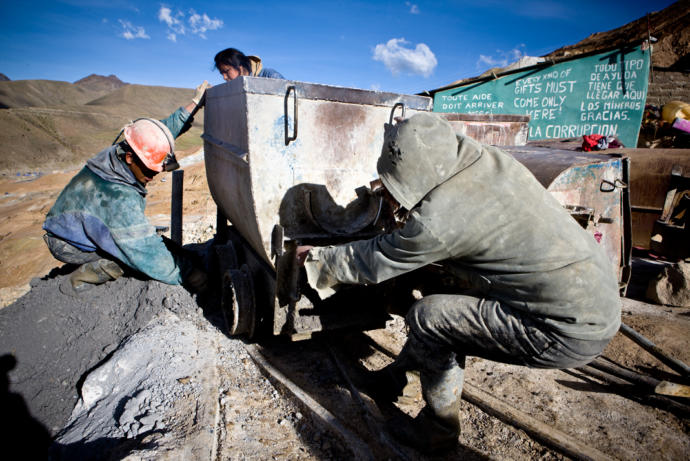
Surma (16) and Marisela (19) are some of the only working girls in the mine. They are pulling an empty cart that weighs
1 ton when full of mineral.
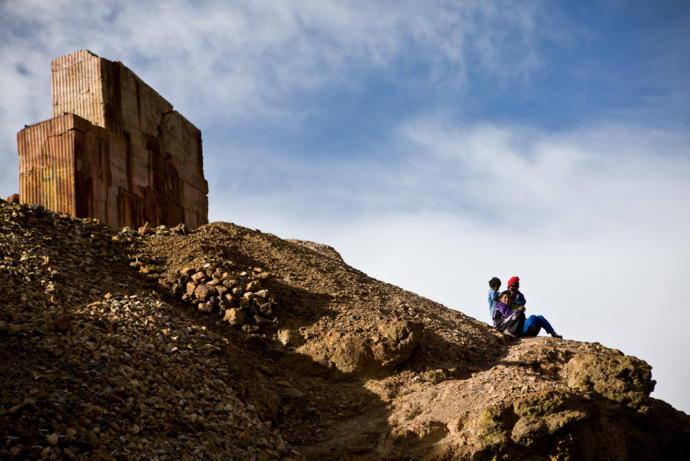
Children at the edge of a cliff close to the “bocamina” (an entrance to a mine) they guard together with their mother.

Surma is 16 years old and has 8 brothers. She is the only one in the family that works besides her mother. She intends
to go back to school but has been already 2 years working in the mine.
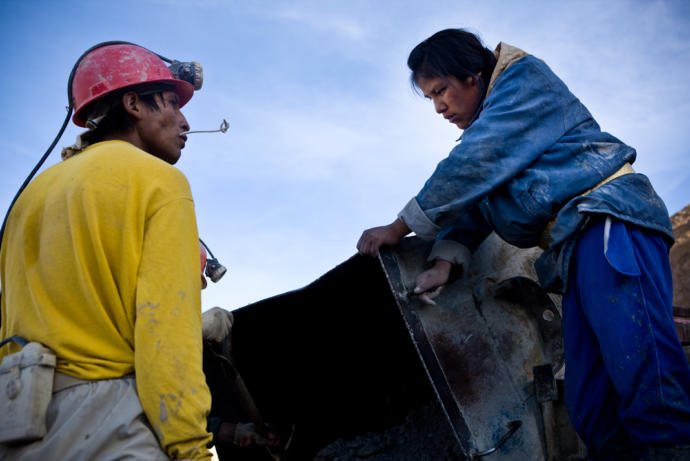
Mariela (19), one of the few women working in the mine, helps unload a 1 Ton cart of mineral. She has exactly the
same duties as a regular miner would have.
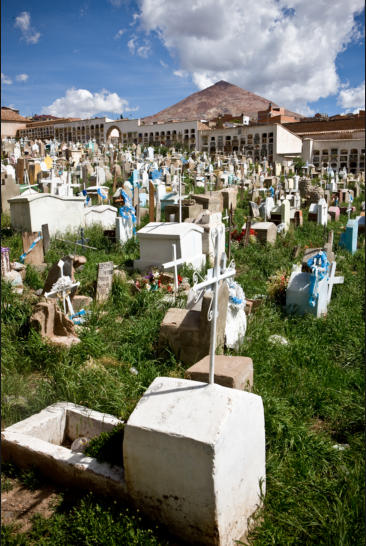
The section of the cemetery in Potosi where the poorest people (mostly miners) are buried. The burial site is paid
annually, if the family stops paying, the body is exhumed to give way for another body.
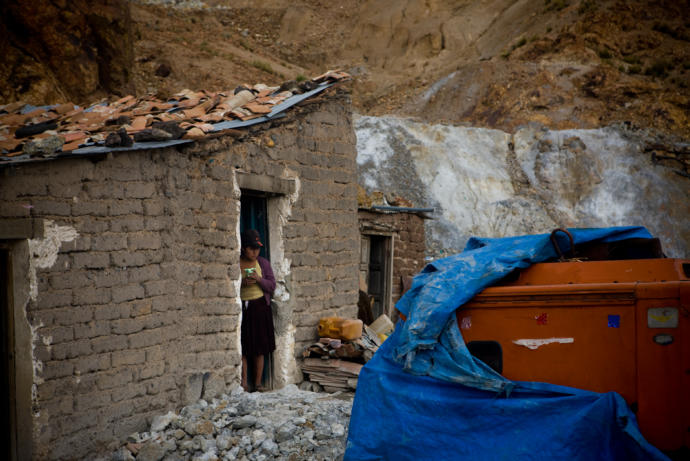
A girl at the entrance of her house, which is situated next to the entrance of a mine. Entire families live guarding the
entrances and the warehouses of the mines. A lot of looting with violence makes this a very dangerous job, specially
for women (who are left in charge).
